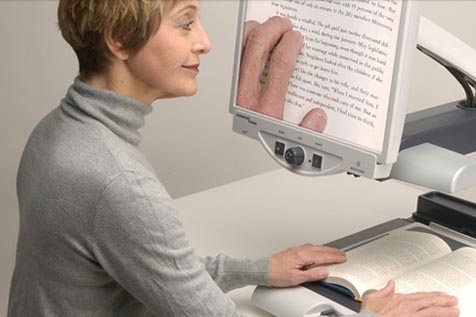Legal Blindness is defined by either one of both of the following:
– Central Visual Acuity of 20/200 or less in the better seeing eye with best possible correction (usually glasses or contact lenses)
– Visual Field of 20 degrees or less
Often people who are diagnosed with legal blindness still have some useable vision. They may be able to detect motion, light sources, or see using their side vision.
Low vision refers to visual impairment that often makes it difficult for patients to complete their activities of daily living (see last post for more on low vision). Patients with legal blindness will often be referred for low vision services; however, there are also many patients who are NOT legally blind who would benefit from low vision services to help improve their vision function.
Low vision services may help improve reading ability, address mobility difficulty, and incorporate lifestyle modifications to help patients accomplish day-to-day chores. There are optical and non-optical tools that can help improve patients’ quality of life immensely and address individual visual goals. Low vision services are more extensive than simply providing magnifiers.
To learn more about our Low Vision Services, please take a look at our Adult Services.

